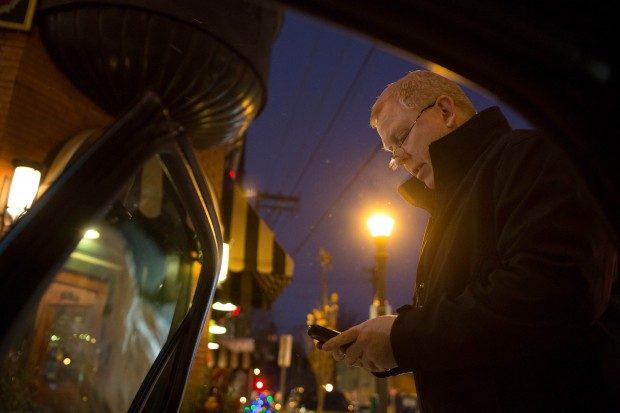The tragedy of a young girl who was killed on New Year’s Eve by a motorist on contract with a cellphone app-based ridesharing service has at least one insurance group speaking up even louder to drive home a point they’ve made all along about such services.
That point is that personal automobile insurance is not intended to cover people who are using their vehicles for commercial purposes. The incident also leaves open a possible gap that should pose some concern for the insurance industry.
The 6-year-old girl, Sophia Liu, was killed when an SUV driver under an Uber contract struck her in a San Francisco crosswalk.
Uber has said it’s not liable since the driver was not doing a trip on the Uber system but instead was between rides. Uber’s insurance does not cover drivers between rides, according to the San Francisco-based company, which has been issuing statements but has not been speaking much directly to the media. Uber did not respond to interview requests for this report.
The Property Casualty Insurers Association of America (PCI), which worked with the California Public Utilities Commission while the CPUC was drafting regulations for ridesharing services like Uber, has expressed concern about a possible gap in coverage between commercial insurance and personal insurance.
CPUC in September 2013 decided to regulate transportation network companies, requiring them to maintain commercial liability insurance policies providing not less than $1 million coverage for incidents involving vehicles and drivers while they provide TNC services.
The rules state that insurance coverage must be available to cover claims regardless of whether a TNC driver maintains insurance adequate to cover any portion of the claim. But the rules don’t say what happens if an Uber driver who isn’t providing a ride gets into an accident.
“That’s something that we’re concerned about, the gaps that are there,” said Robert Passmore, senior director of personal lines policy for the PCI.
If a taxi driver is off duty and headed home, or between fares, there’s still a commercial policy in place to cover the driver. That’s not necessarily the case with Uber drivers.
“It doesn’t say when they pay,” Passmore said.
Passmore, who declined to talk specifically about the incident involving the young girl who was killed, said he believes there is need for further discussion about the CPUC rules and that PCI plans to further “engage” with CPUC to make known the association’s concerns.
“We think that’s the next discussion here,” he said, adding that the issue of how a vehicle is actually being used must be looked at.
“The question is: Where is that line drawn?” he said. “That’s what we think needs to be worked on.”
In a response to queries from Insurance Journal CPUC spokeswoman Terrie Prosper on Friday said in a statement via email that more work will be done on the TNC regulations.
“Our proceeding has a phase II. Going forward we will ensure that the overarching goals of public safety, equity and innovation are being achieved. We will have a public process in the next year to consider the performance of this new mode of transportation and accompanying regulations. This includes a public workshop.”
Quoting from part of the decision, she noted: “The commission will convene a workshop one year after the issuance of this decision to hear from all stakeholders on the impacts of this new mode of transportation and accompanying regulations. Workshop topics will include, but not necessarily be limited to, a consideration of safety, competition, innovation, accessibility, congestion, the California Environmental Quality Act and other pollution-related issues.”
According to reports from the San Francisco Police Department, on New Year’s Eve a mother and her two children were crossing the street when an SUV driver acknowledged by Uber to be one of their contractors turned into the crosswalk and struck the family.
The driver was 57-year-old Syed Muzzafar, who was arrested on suspicion of vehicular manslaughter. The mother, Huan Kuang, suffered several broken bones, and her son was also injured in the incident.
San Francisco Supervisor Jane Kim told an ABC television station in San Francisco that she wants the city to take a closer look at what she calls the gray area of who is responsible.
“We have a new type of business that has only just begun to get regulated at the state level and no clear answers about where there’s liability when incidents occur,” Kim said in an interview with ABC.
It’s not the first time Uber has been under fire. In December, Uber CEO Travis Kalanick weathered social media outrage over pricing policies on New Year’s Eve.
“If you absolutely need a ride between 1 and 3 a.m., Uber will be very reliable,” Kalanick said in a YouTube video. “But it will be a pricey ride, and you just have to accept that.”
The company’s pricing policies can sometimes result in fares that are much higher than usual due to high demand, but Uber reported his statement resulted in fewer complaints about rates that night.
Uber has entered more than 60 markets and even has an international presence in cities like Berlin and Tokyo. According to leaked data, Uber is generating $200 million a year in revenue beyond what it pays to drivers.
(This article was originally published on Insurance Journal. Reporter Don Jergler is the West Coast editor of Insurance Journal.)





















 First Atlantic Hurricane Forecast for 2026 Suggests Season Close to 30-Year Norm
First Atlantic Hurricane Forecast for 2026 Suggests Season Close to 30-Year Norm  Final Sentencing in Large Scale Crop Fraud Case That Cost Insurers Nearly $35M
Final Sentencing in Large Scale Crop Fraud Case That Cost Insurers Nearly $35M  Underwriter, Actuary Fears of AI Drop; Work Needed on Collaboration
Underwriter, Actuary Fears of AI Drop; Work Needed on Collaboration 



